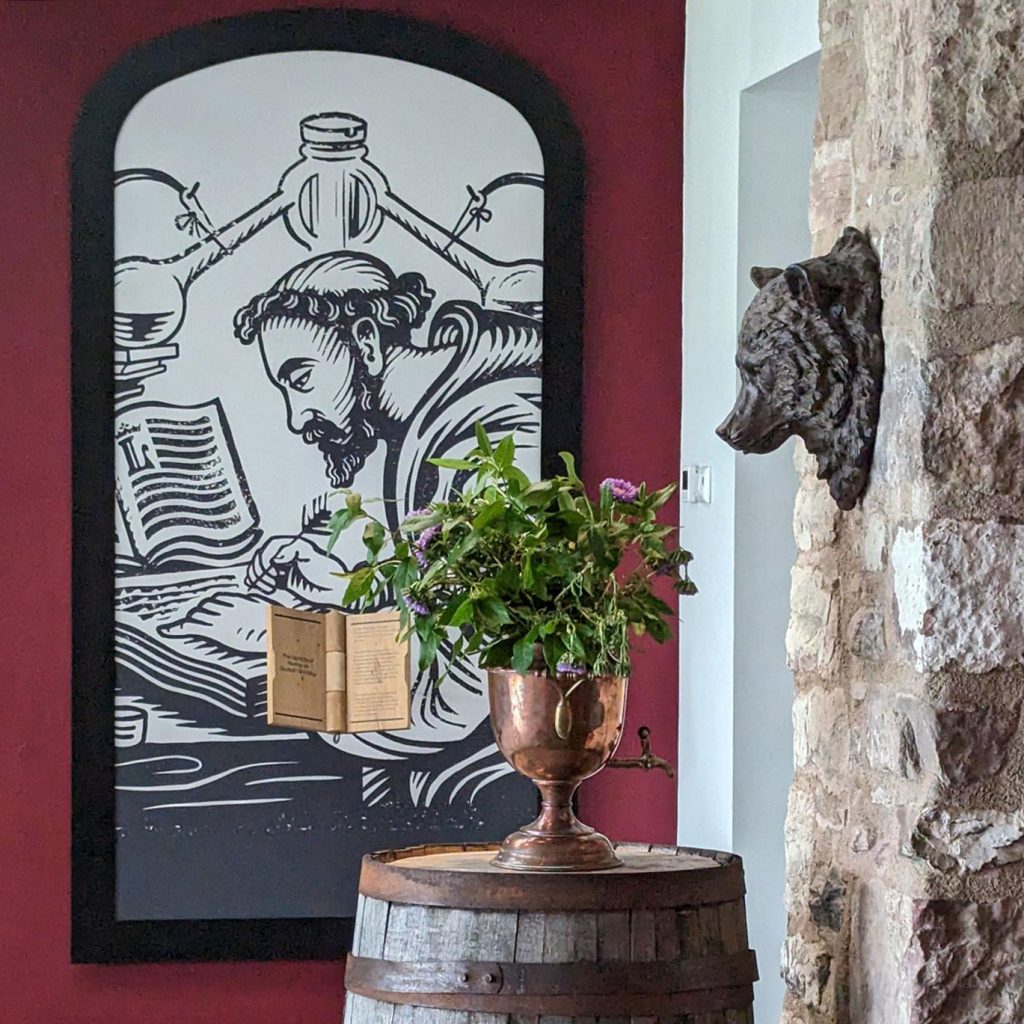Lindores Abbey: the spiritual home of Scotch whisky
Author: Alexandra Gray de Walden

It was founded in 2017; it’s a baby among Scotch whisky distilleries. How, then, does whisky production at Lindores Abbey predate all others?
Lindores Abbey Distillery, built in 2017, sits nestled in a shallow valley just outside Newburgh in Fife. Overlooked by the image of the bear and ragged staff (an emblem of the Earls of Warwick) burned into the side of the adjacent Park Hill, chivalric and Caledonian history fills the air. Nowhere more so than in the ruins of the abbey from which the distillery takes its name.
Built in 1191 next to the River Tay, the abbey was inhabited by Benedictine monks from the Order of Tiron, France. During the Scottish Reformation, the Catholic abbey was ransacked and burnt down under the orders of John Knox. While much of its history was lost, the abbey bell is now in St Giles’ Cathedral in Edinburgh and many of the original construction stones were used to build the nearby town of Newburgh.
The current custodians of Lindores Abbey (distillery and abbey ruins), are Drew and Helen McKenzie Smith. Lindores Abbey Farm has been in Drew’s family since 1913 but it wasn’t until 2000 that the significance of those ruins “in the back garden” became totally clear.
That year, lauded beer and whisky writer Michael Jackson knocked on the farmhouse door and asked Drew’s father Ken if he could look around the ruins. After wandering around taking notes and the odd photograph, he disappeared without a word. The following year, his newly published book “Scotland and its Whiskies” and an accompanying note arrived at Lindores. The book’s section on the abbey begins: “For the whisky-lover, it is a pilgrimage.”
1494 and all that
It had transpired that recently translated 1494 tax records (known as The Exchequer Rolls) stated: “To Friar John Cor, 8 bolls of Malt, wherewith to make Aqua Vitae for King James IV”. Friar John Cor was one of Lindores’ monks. This remains the earliest written reference to whisky making in Scotland, hence Michael Jackson’s keen interest.

Latin for “water of life”, over time “aqua vitae” became “uisge beatha” in Scottish Gaelic, before eventually becoming the word we know now as “whisky”. In a nod to where it all began, an Aqua Vitae is still made here today. An unaged, malt-based spirit, it’s infused with natural botanicals including locally sourced pine and Douglas fir, cinnamon, ginger and cardamom.
Standing among the ruins of Lindores Abbey in early August, I got a sense of the significance of this place. After crossing the road from the distillery to the ruins, our guide for the day, Murray Stevenson, paused.
“Do you feel different at all?” he asked. Silence and perplexed faces answered him. I was considering disturbed spirits of former monks or a theological explanation.
“This road marks the border between the Lowlands and the Highlands,” Murray explained. “We’ve just crossed over into the Highlands, making Lindores Abbey the most northerly distillery in the Lowlands.” I suddenly felt the air take on a crisper edge.
A new era of distilling
In December 2017, distilling was once again taking place at Lindores Abbey and the first casks were filled. The new distillery was converted from farm buildings. Helen and Drew had started construction the previous year, not without heavily involving Dr Jim Swann, biologist, chemist and whisky oracle. Tragically, Jim died before the distillery opened, never seeing the results of his vast contribution.
The distillery uses barley from local farmers, adding an element of terroir to its whiskies. Distiller Gary Haggart ferments the barley in vessels called washbacks made from Douglas fir. The long fermentation and local barley produce a light and floral base spirit, ready for maturation.
Maturation casks include ex-Bourbon casks and so-called STR (shaved, toasted and recharred) wine casks. While Lindores Abbey doesn’t produce a peated whisky, ex-peat whisky casks are used to mature some of their drams – adding just enough peat character for enthusiasts of that category of Scotch.
There is a house style here, full of character and texture – just what is needed for a young distillery to compete with well-established names. The MCDXCIV (1494) single malt was Lindores Abbey’s first release and is resplendent with notes of plump stone-fruit and crumbly fudge.
The distinctively shaped bottle design at Lindores Abbey is drawn from the remains of a 12th century pillar found in the abbey ruins. As I walk past ancient abbey stones now incorporated into the new distillery buildings, I wonder what Friar John Cor would make of it all?


